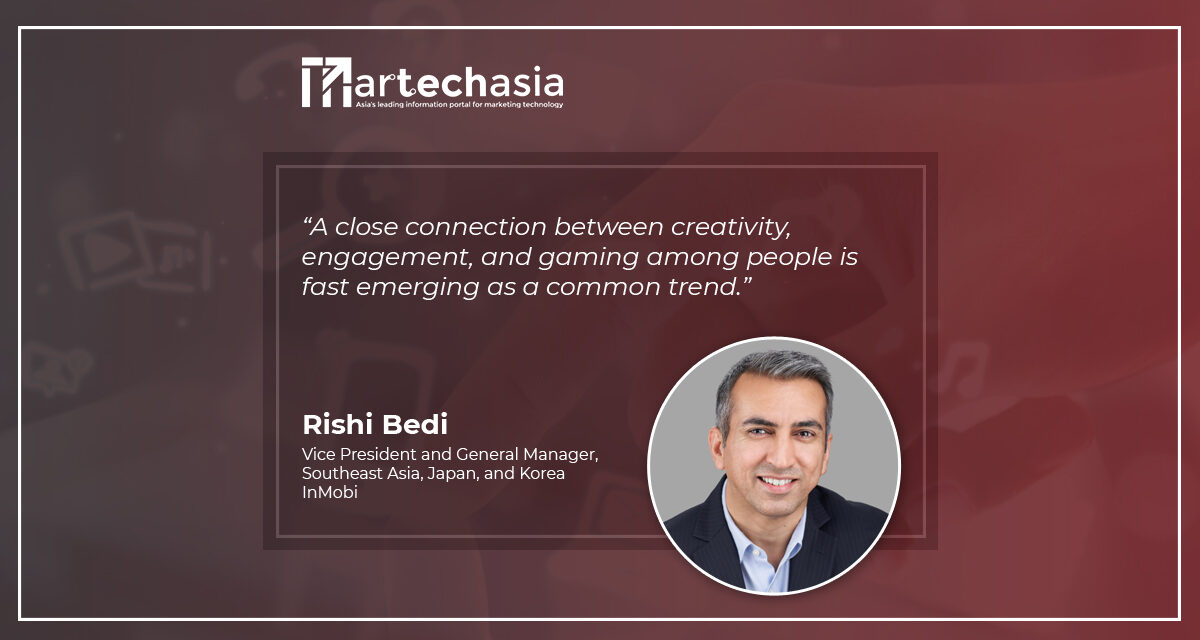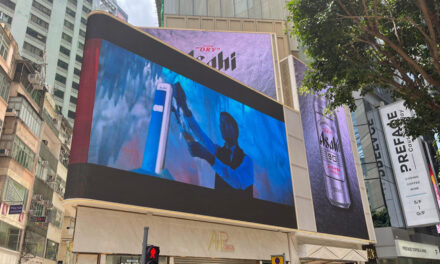Rishi Bedi shares his insights on how mobile technology transforms creative storytelling for brands and how brands can optimize the best of mobile technology to upscale their ads in today’s dynamic, hyperconnected world.
As technology continues to permeate everything we do, for many, the morning routine starts with first picking up the mobile phone. Be it scrolling through the morning news, checking weather updates before stepping out of the house, or gaming and browsing social media feeds in between work meetings, one thing is certain – mobile content experiences including ads are an integral part of our everyday lives.
Keeping up with Gen Now
As the mobile-first consumer’s behavior and expectations evolve exponentially, brands must stay ahead of the curve in terms of their engagement strategies. However, as brands try to engage the overwhelmed consumers, the hardest challenge lies in keeping up a consistent level of creativity. So, how can brands optimize the best of mobile tech to ensure that they are competitive and relevant in today’s dynamic, hyperconnected world? The answer lies in 3 poignant steps: 1. Fueling creativity with mobile-first intelligence 2. Engaging with the consumers by leveraging the native features of mobile, and 3. Ending with a clear and meaningful call-to-action.
Fueling creativity with mobile-first intelligence
Oftentimes, brands can seek inspiration and conceptualize the most relevant experiences for their target audiences by leveraging mobile-first consumer intelligence. The result is the potential for brands to engage with consumers in their moments of truth. For instance, eleven months into the pandemic, a globally known soap brand, Lifebuoy realized that public service announcements (PSAs) in Indonesia weren’t making an impact anymore. The brand analyzed and applied real-time location intelligence, which helped them arrive at the concept of completely transforming the healthcare measures related PSAs during the pandemic. The awareness ads made personalized service announcements for each smartphone user, based on the viewer’s regional location, daily habits of users in that location, and psychographic profiles.
On the other hand, a close connection between creativity, engagement, and gaming among people is fast emerging as a common trend. Mobile gaming is being picked by consumers from all age groups and the number of mobile gamers is estimated to have witnessed a 2X YoY growth in unique users and 4X YoY growth in usage. What is even more interesting in the context of brands is that more than 70% of gamers prefer to see an ad as a method to progress in the game and more than 60% of gamers recall the ads they see. A study on the state of mobile gaming in a particular region could guide brands in seeing markets that have the greatest potential for mobile-led gamified ads and the various ways to gamify them.
Engaging with the consumers by using native features of mobile
Delivering a sublime, seamless, and unique consumer experience needs brands to not only draw inspiration from mobile-led intelligence but also implement it using the right native features of mobile. The smartphone has over 50 native features, which if leveraged intelligently, can transform the delivered experience. Their usage can make the consumers have a higher engagement with the brand because it makes consumers feel actively involved in the experiences delivered to them.
Many globally renowned brands have achieved this successfully and at scale. To promote that a newly launched car model supported voice commands, Kia, the automobile brand, combined voice detection and virtual reality technologies in their recently launched artificial intelligence (AI) powered interactive ads. The mobile ads enabled users to virtually explore the interiors of the new car model by live voice commands. Voice commands such as “Hello Kia, open the driver window” from the user ‘opened’ a virtual car door, leading engaged users to immersive product pages, which drove up the product consideration. Dettol, a cleaning supplies brand, boosted purchase intent for a new product in Pakistan that is especially useful in the summer season with a weather forecast based video experience. After an accurate and real-time prediction of weather through the user’s location, time, and day, the ads displayed tailored messages for the product, encouraging users to make a purchase decision. Similarly, to mirror the retail experience online for their new lipstick collection, L’Oréal Paris India, the iconic beauty brand, leveraged augmented reality and facial recognition technologies. The brand created a mobile-first ad campaign where ad units used mobile’s front camera to identify a user’s facial features. The ad then allowed the user to virtually try on and experiment with various lipstick shades from the collection.
As brands get better at building various experiences on mobile, they can also start combining their first-, second-, and third-party data signals along with Dynamic Creative Optimization (DCO) to deliver sequential storytelling to their customers. The learning point for brands here is that imparting an element of customization into every stage of the consumer life cycle is crucial for mobile ad engagement – and this must be done right from the start of an ad viewing journey.
Ending with a clear, meaningful call-to-action
A call-to-action (CTA) button that effectively wraps up the user journey is most critical for capturing the affinity, consideration, and intent built during the immersive experience. From a content perspective, an ideal CTA is user-focused, simple, highlights benefits, creates a sense of urgency, and is customized to the platform. Visually, for creating a good CTA, the button would have to be optimally located, sized, and colored according to different mobile screens and consumer demographics.
To effectively keep up with these extensive considerations, brands could opt to apply various technologies and tools like heatmaps. They present data from visual storytelling and can help brands identify which parts of the display or video ads users are interacting with the most, which can help in the effective placement of a CTA. AI technology can also help brands power their CTA buttons as it could streamline content data and automation throughout the ad’s workflow. More importantly, brands can impart their creativity through their CTA buttons – similar to Al Jalila Children’s Specialty Hospital. The brand’s ads included relevant neurological designs surrounding their CTA buttons while also diversifying their CTA mechanisms to redirect users to videos or website landing pages according to their interest levels.
The future of creativity rests on mobile intelligence and innovation
While there are various measures that brands can use to keep their mobile ads competitive, innovation, intelligence, and creativity remain constant denominators for brands looking to scale to new heights. Effective use of mobile-first intelligence allows brands to act on existing resources within informed boundaries while innovation allows for brands to push past these boundaries and produce transformative ads that can catch the attention of busy consumers. Overall, remaining competitive requires a holistic effort on both short-term and long-term strategies. As long as brands can achieve a synergistic balance of the two and add mobile-first intelligence-driven creativity to their mobile ads, the potential for great returns on them remains limitless.



















